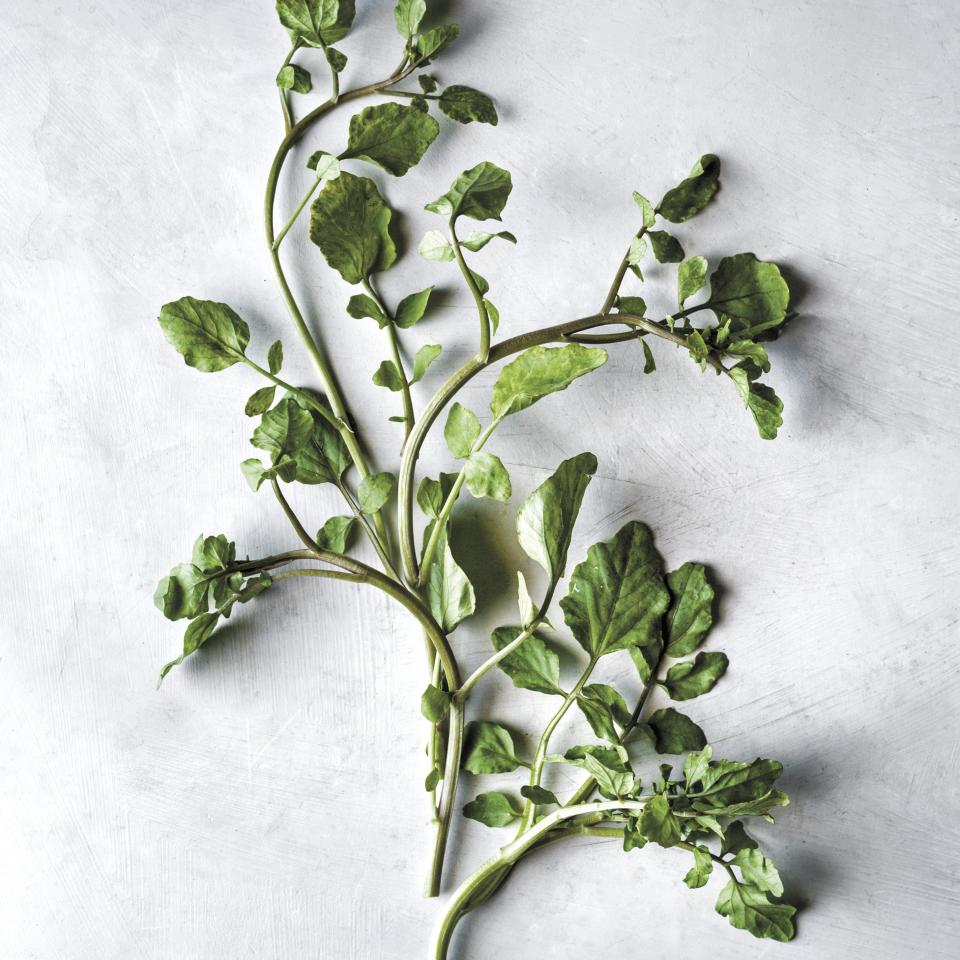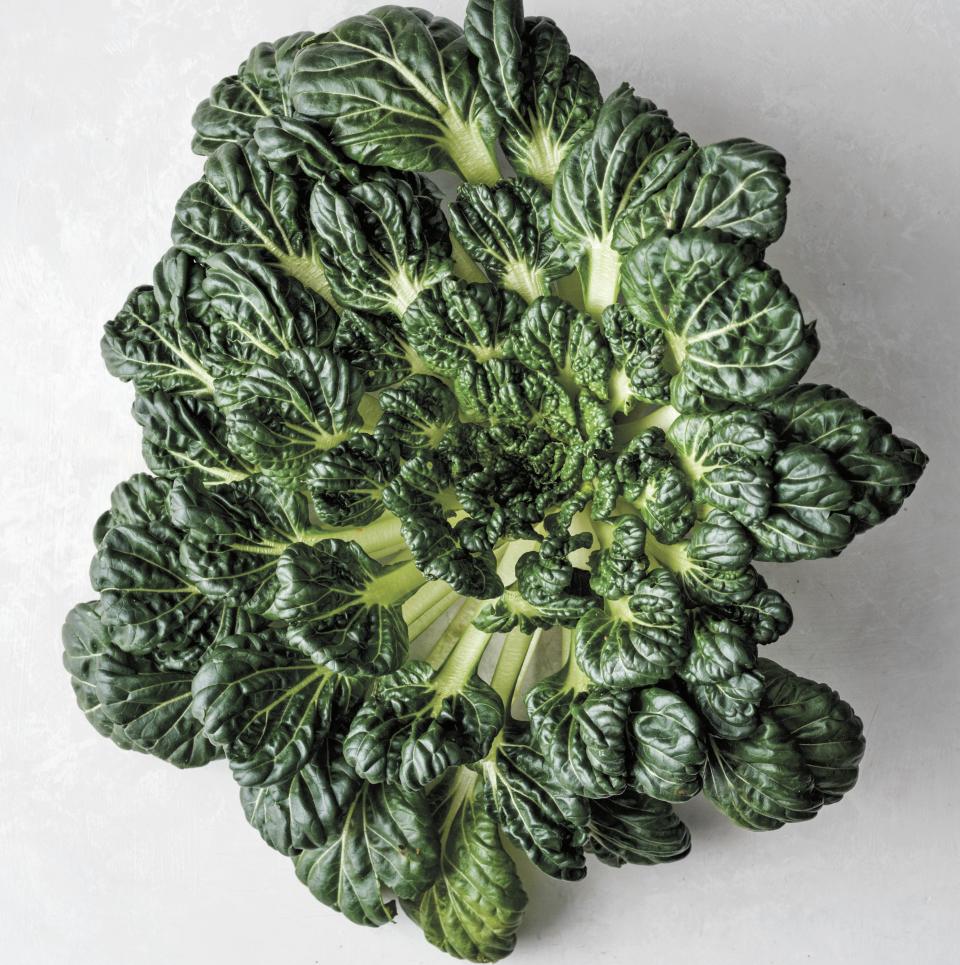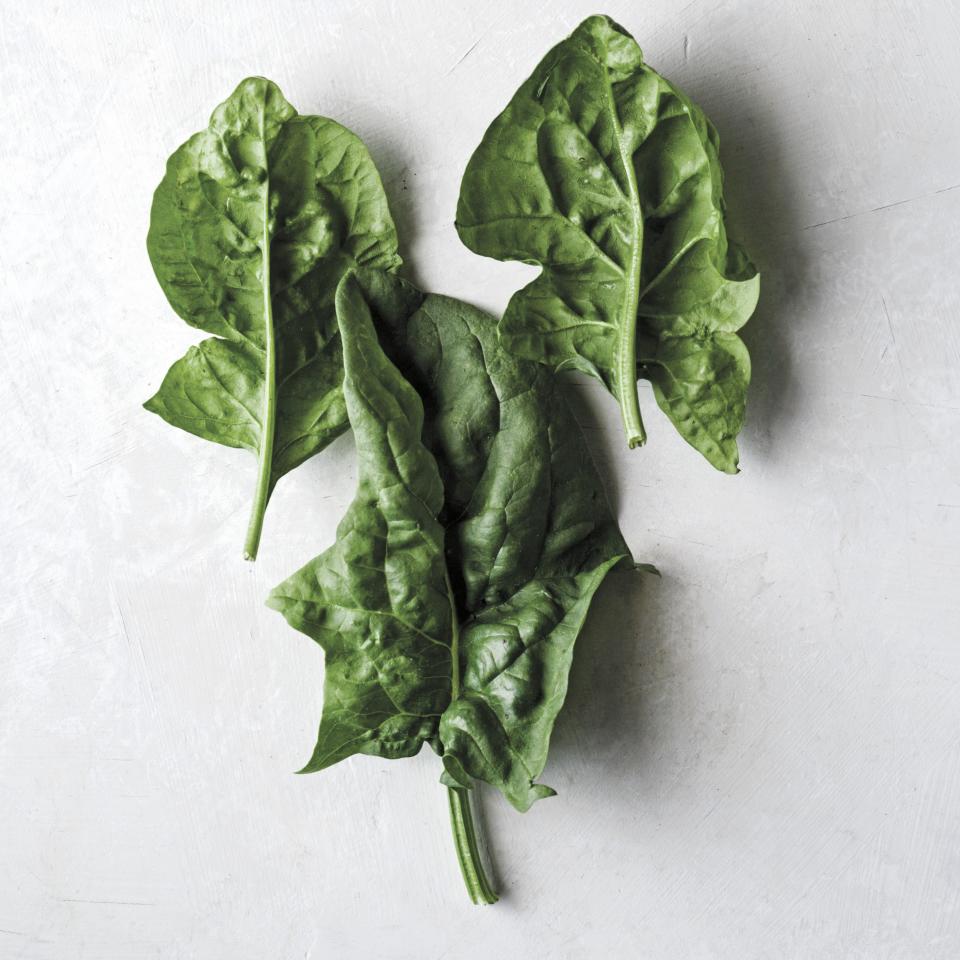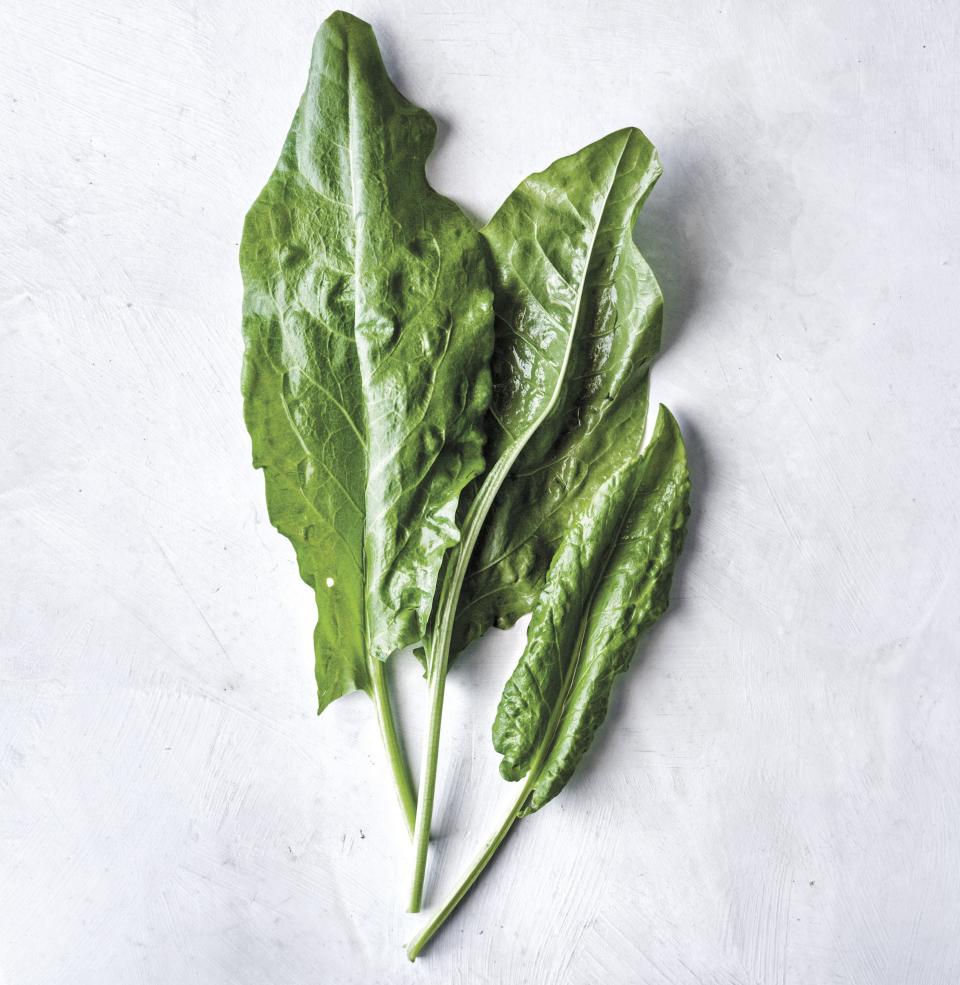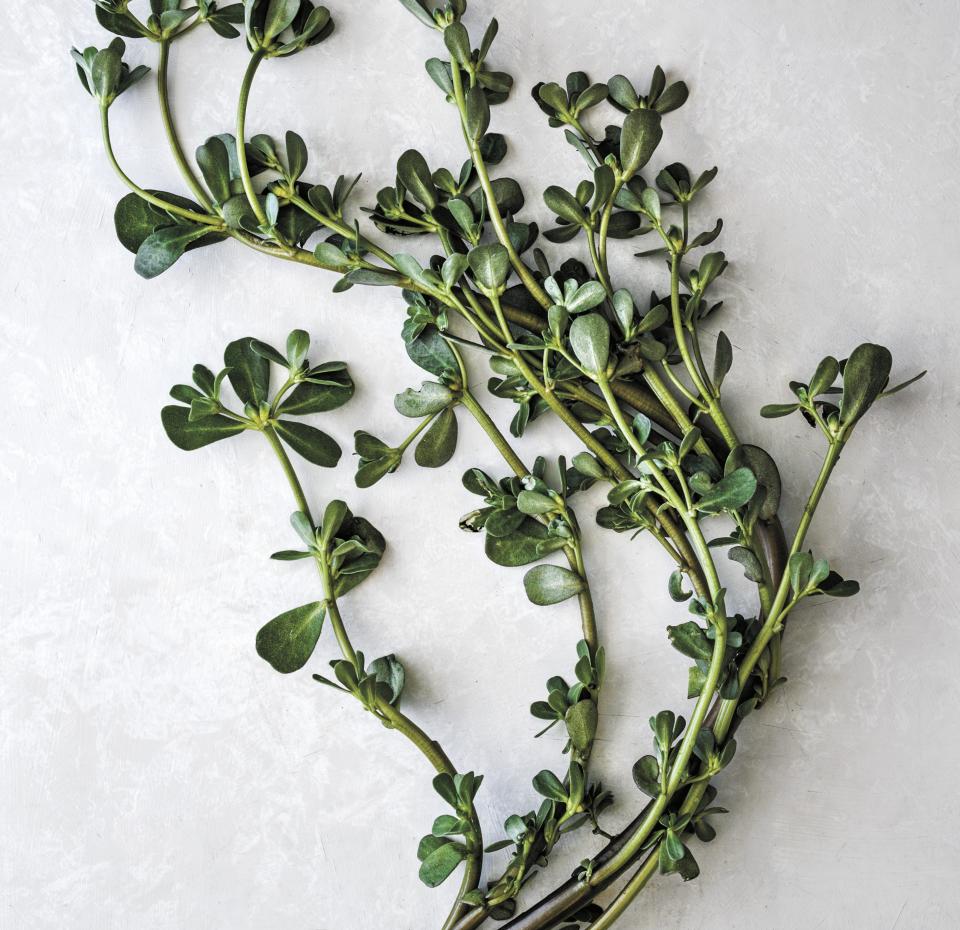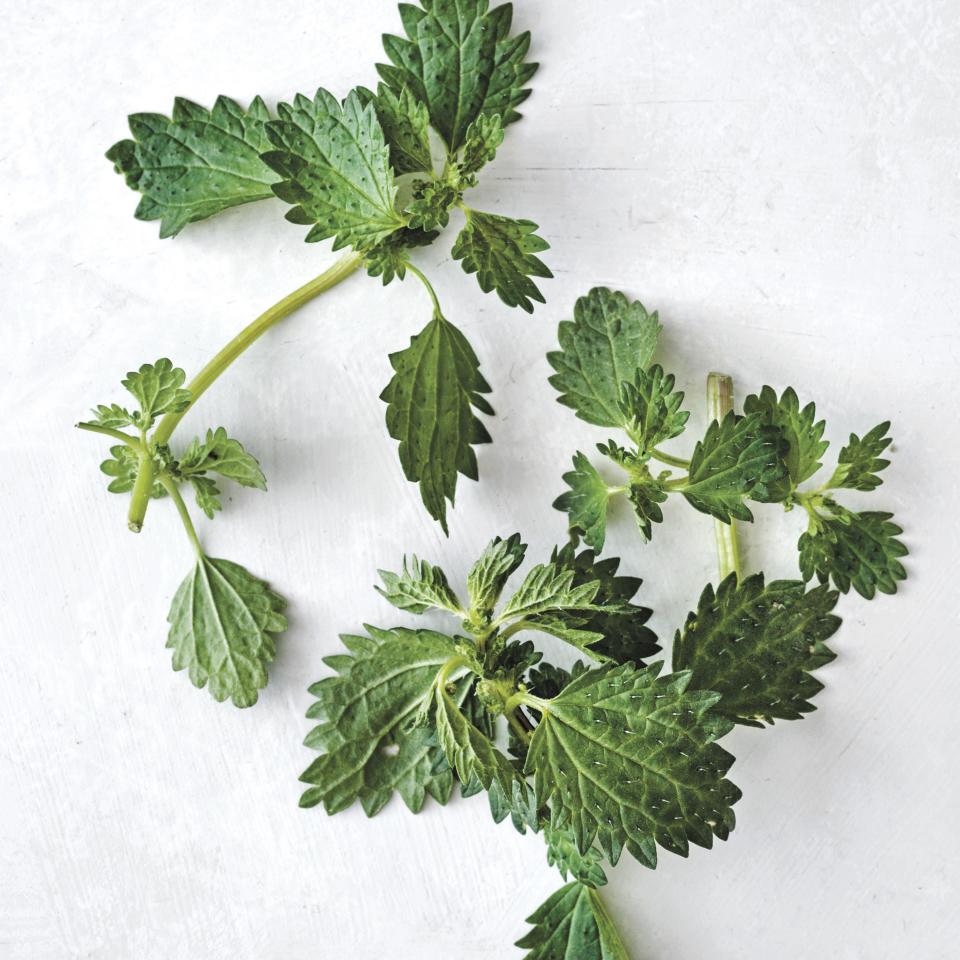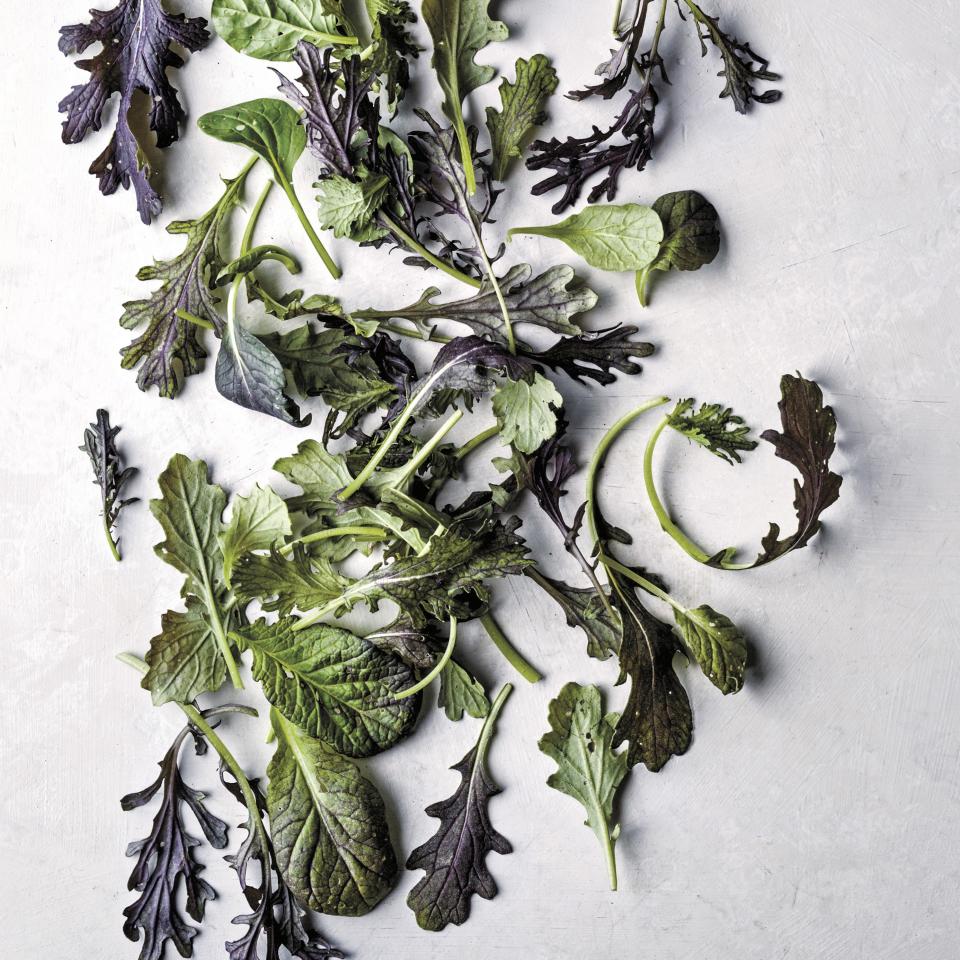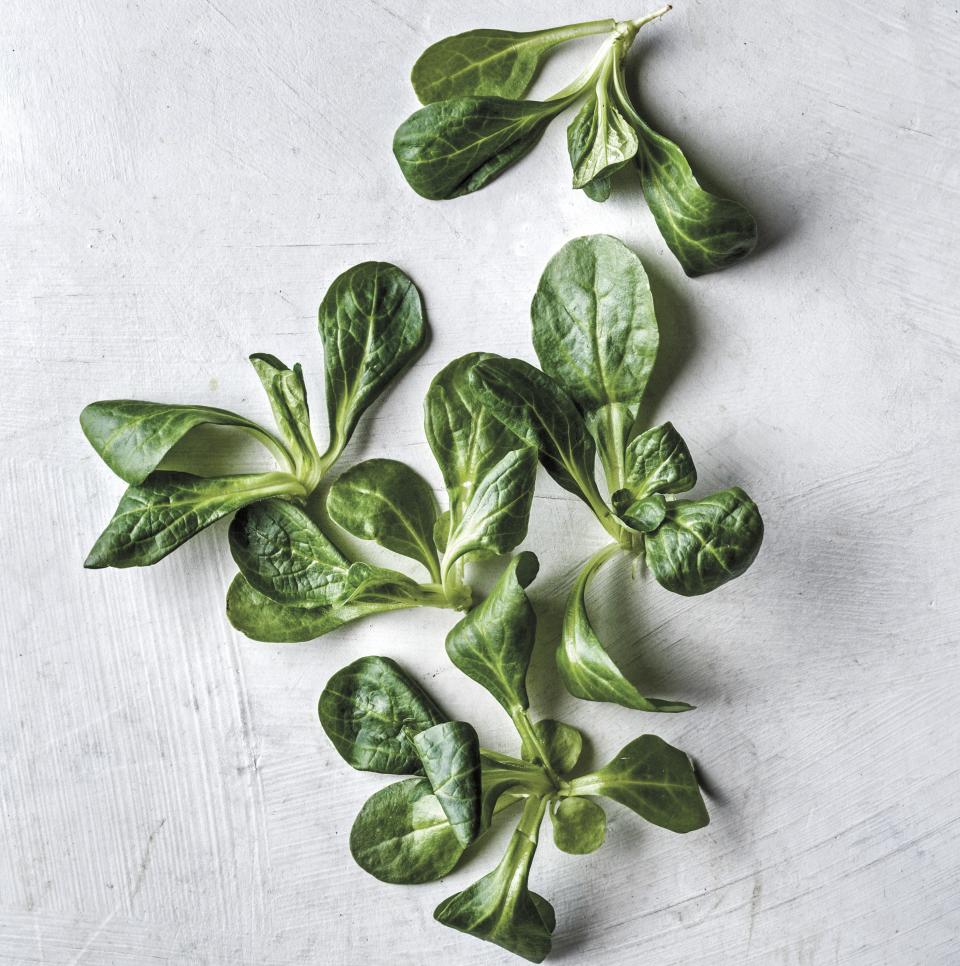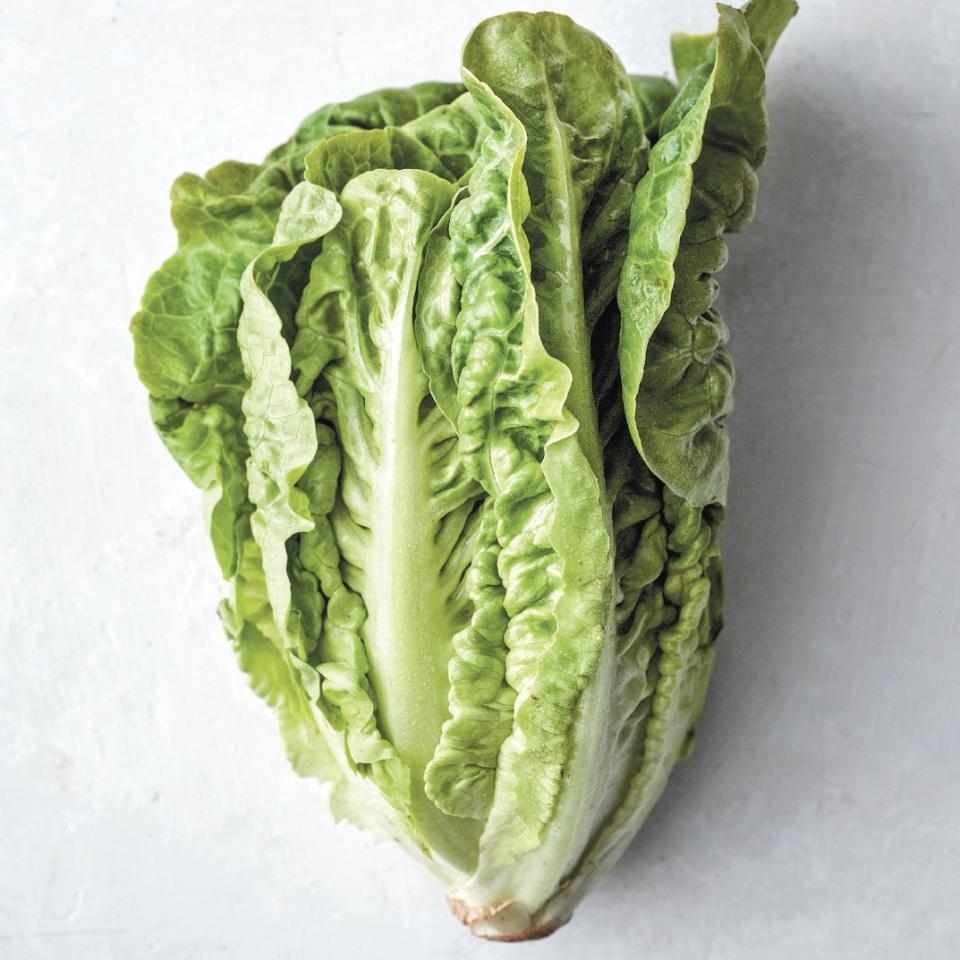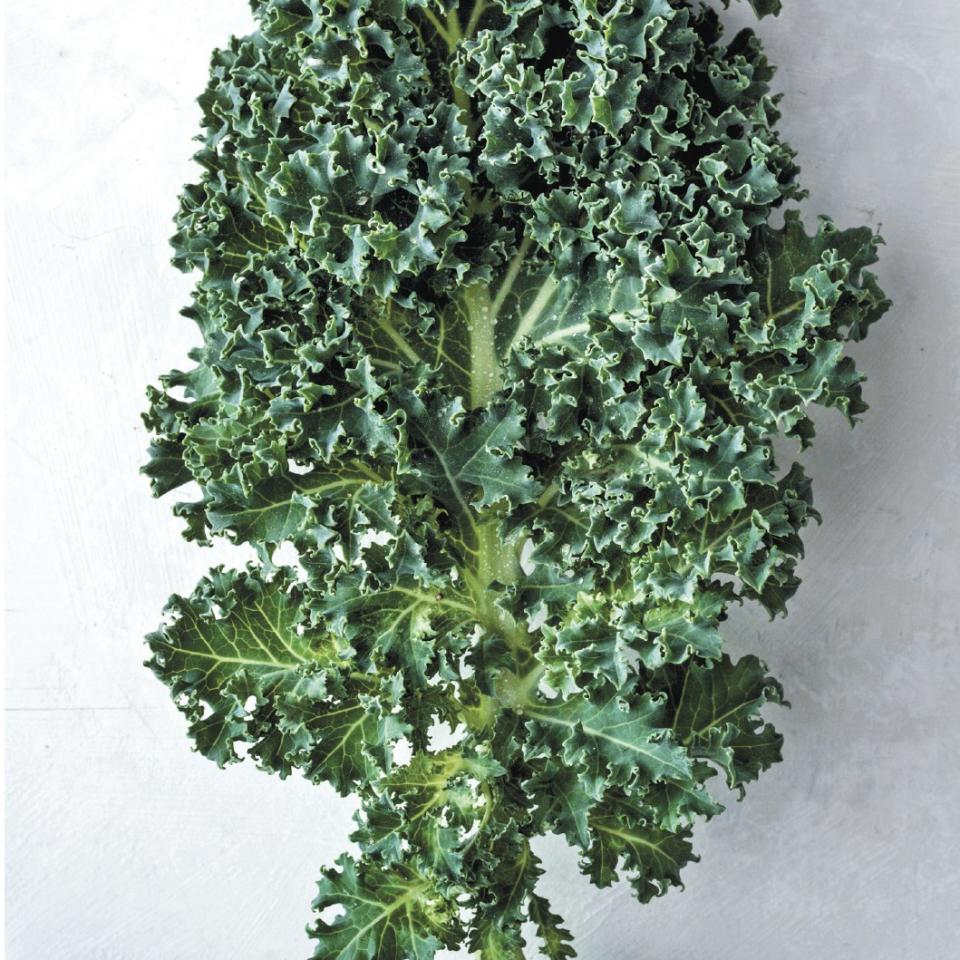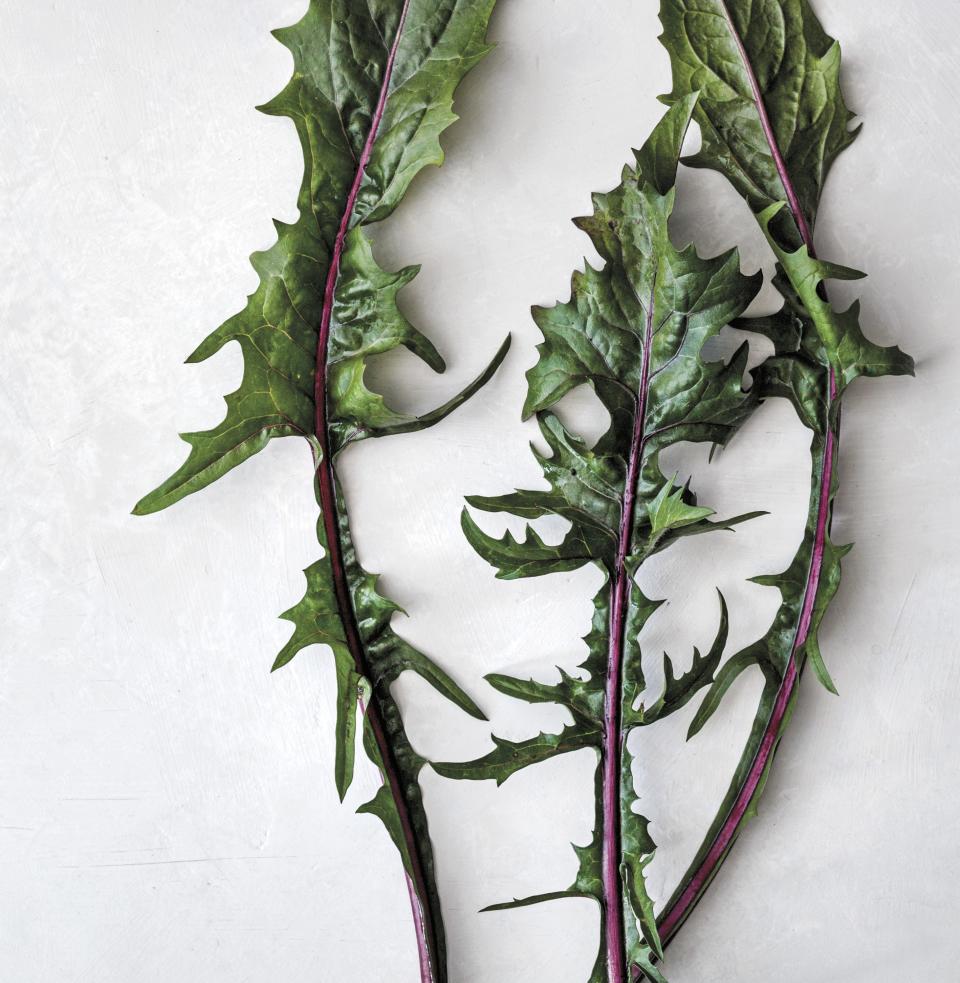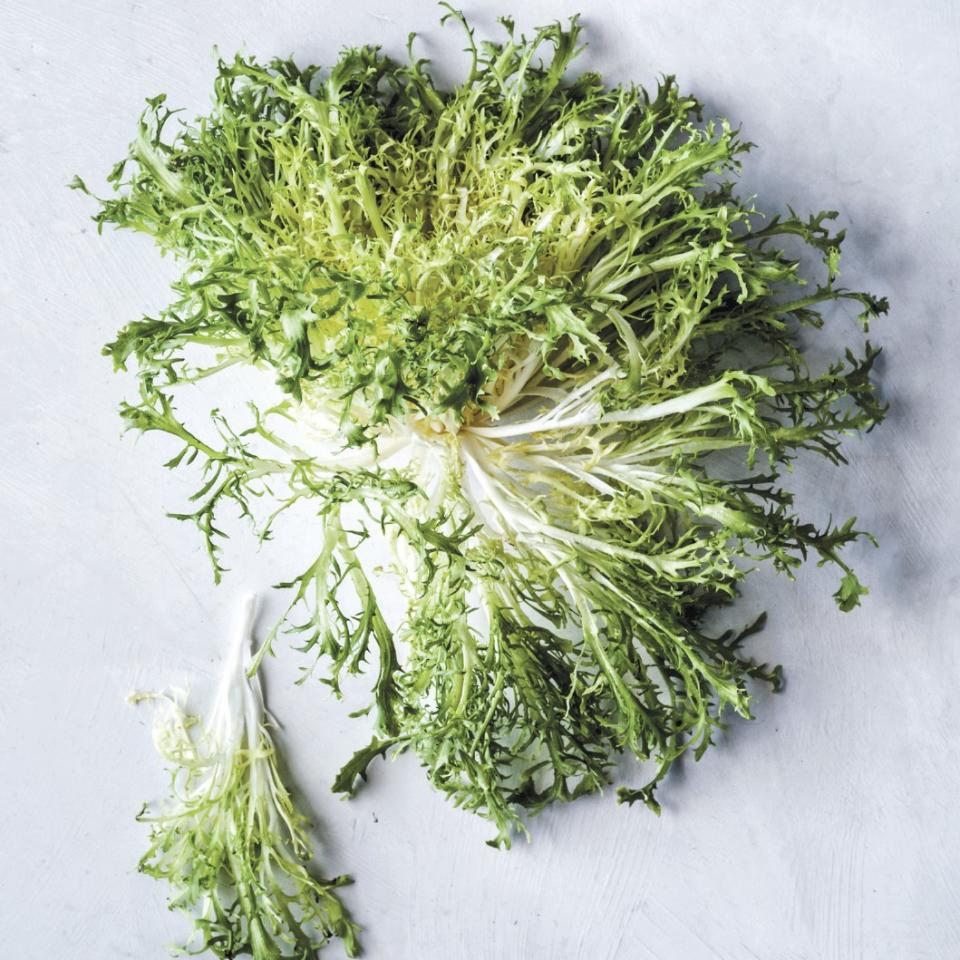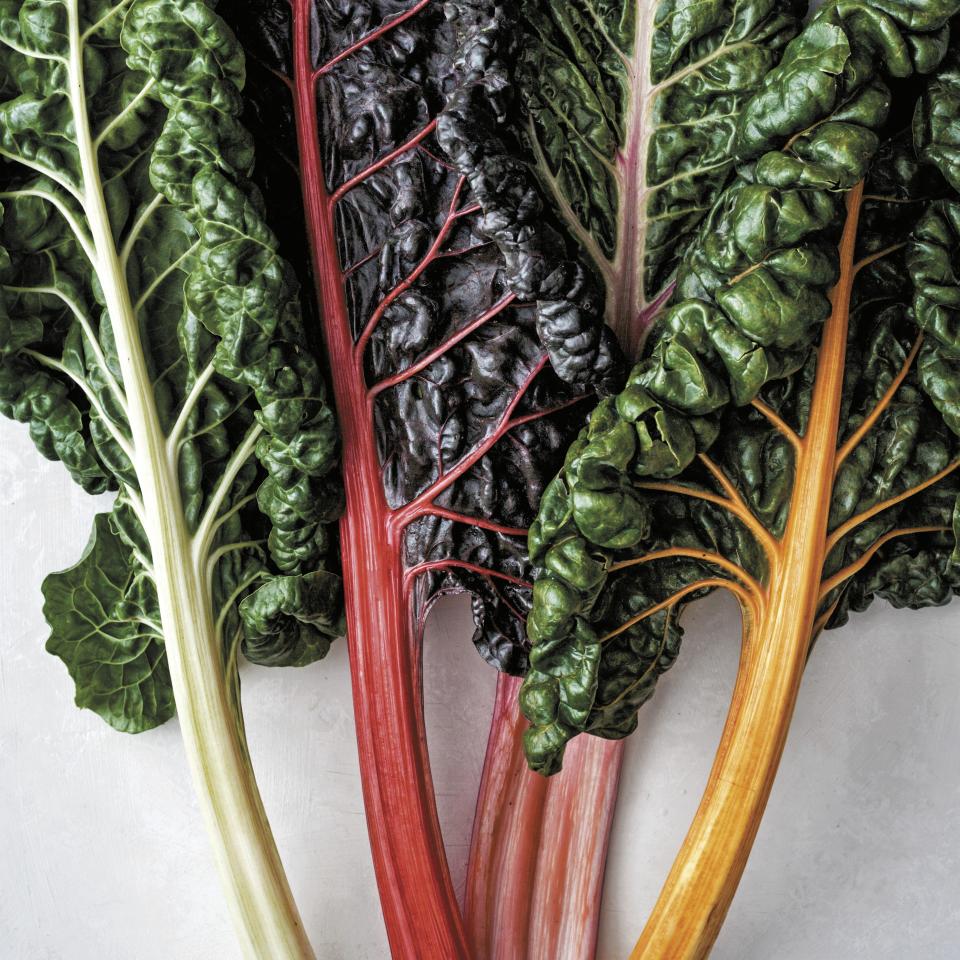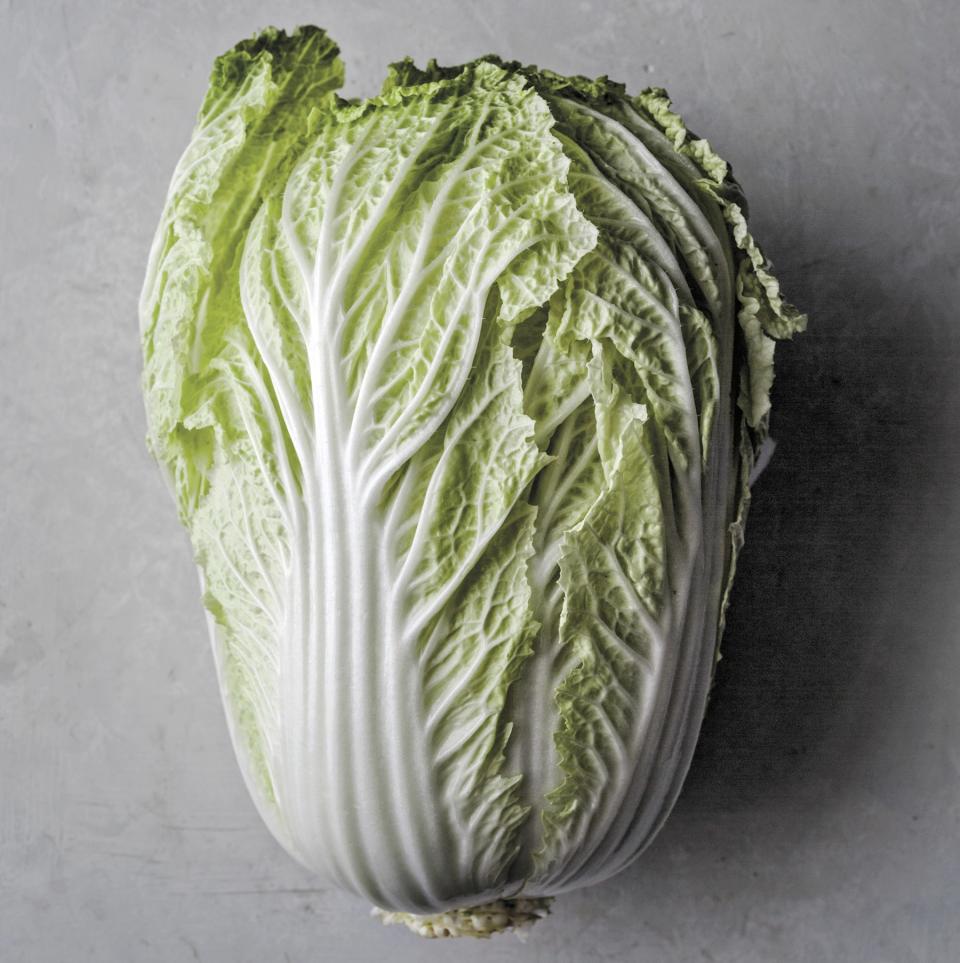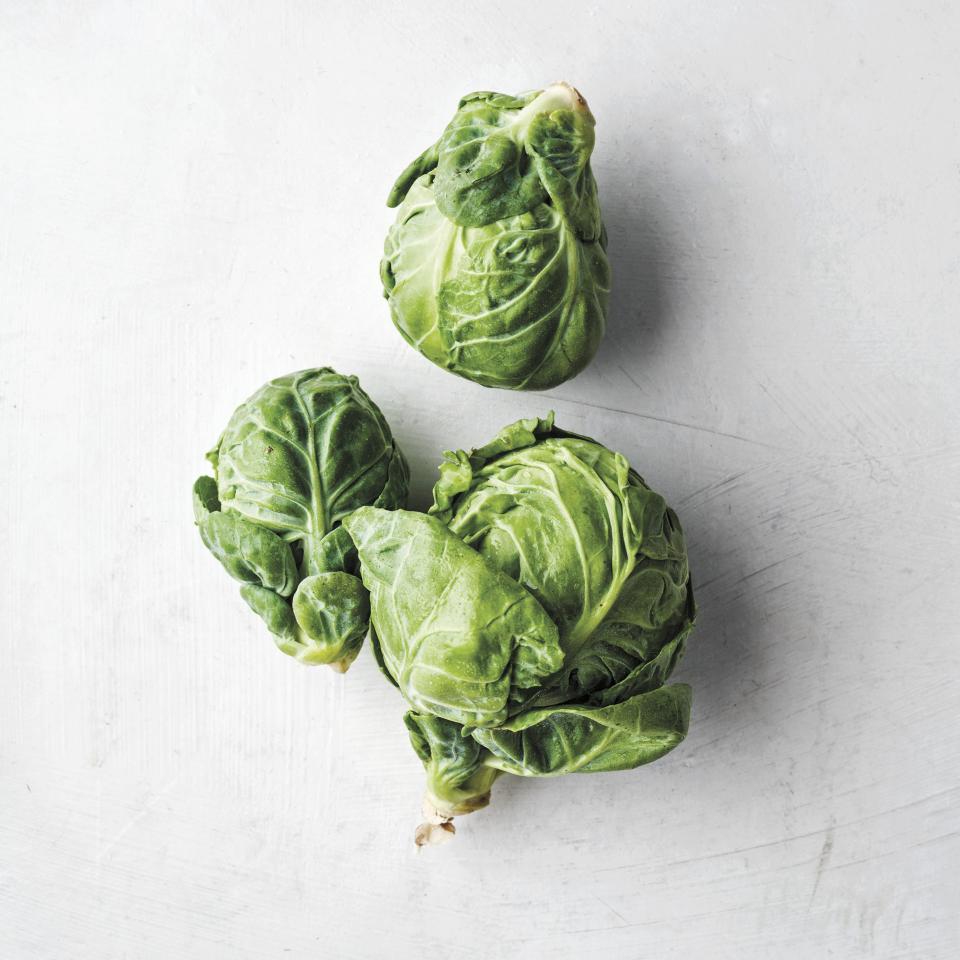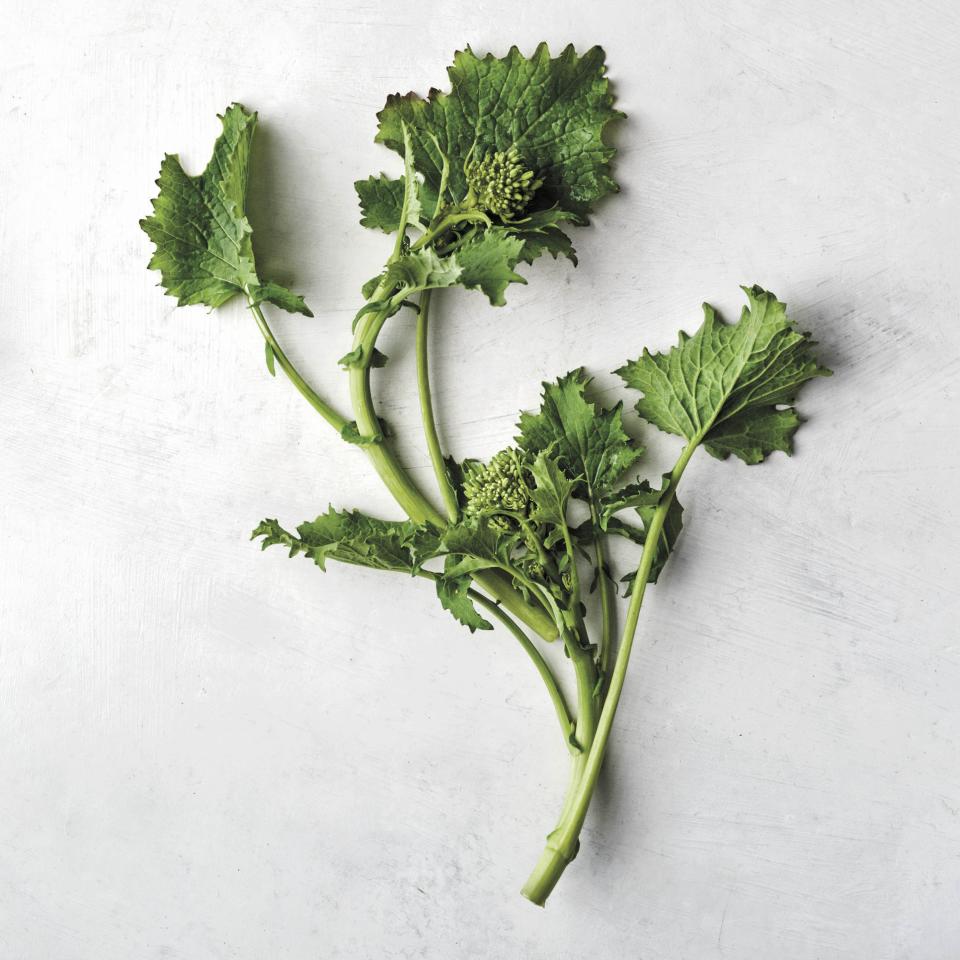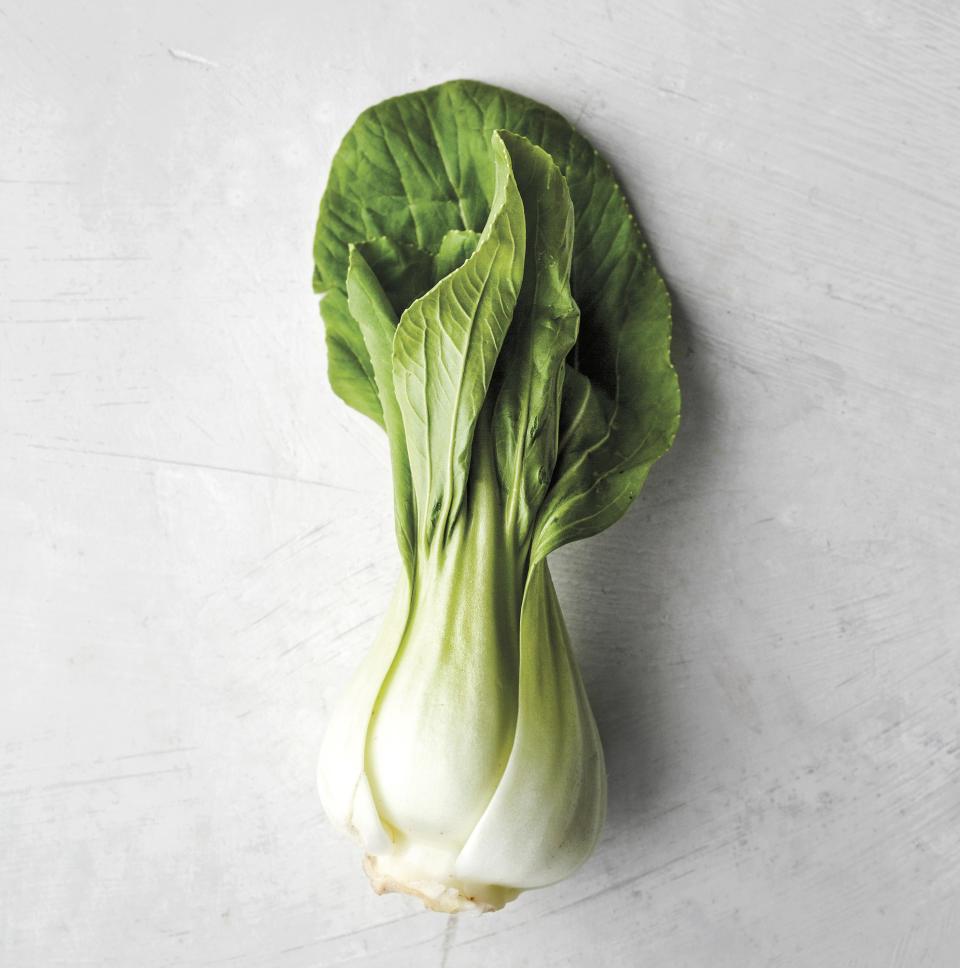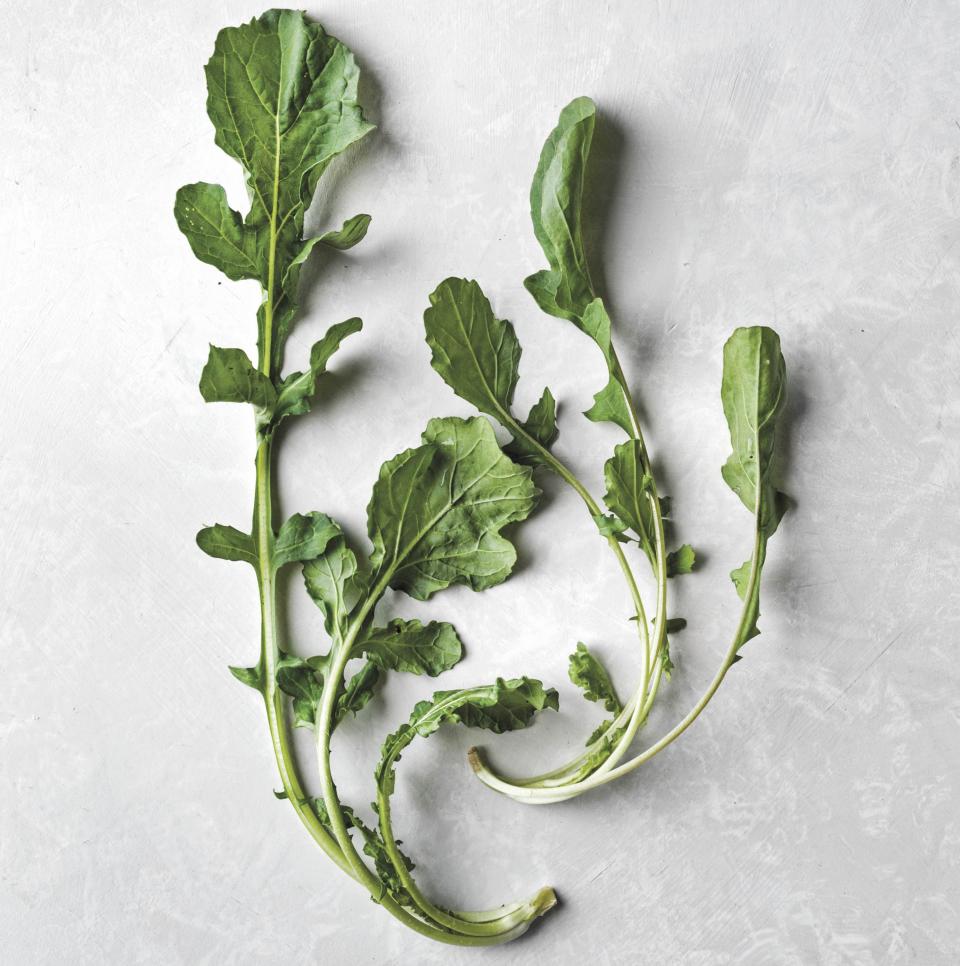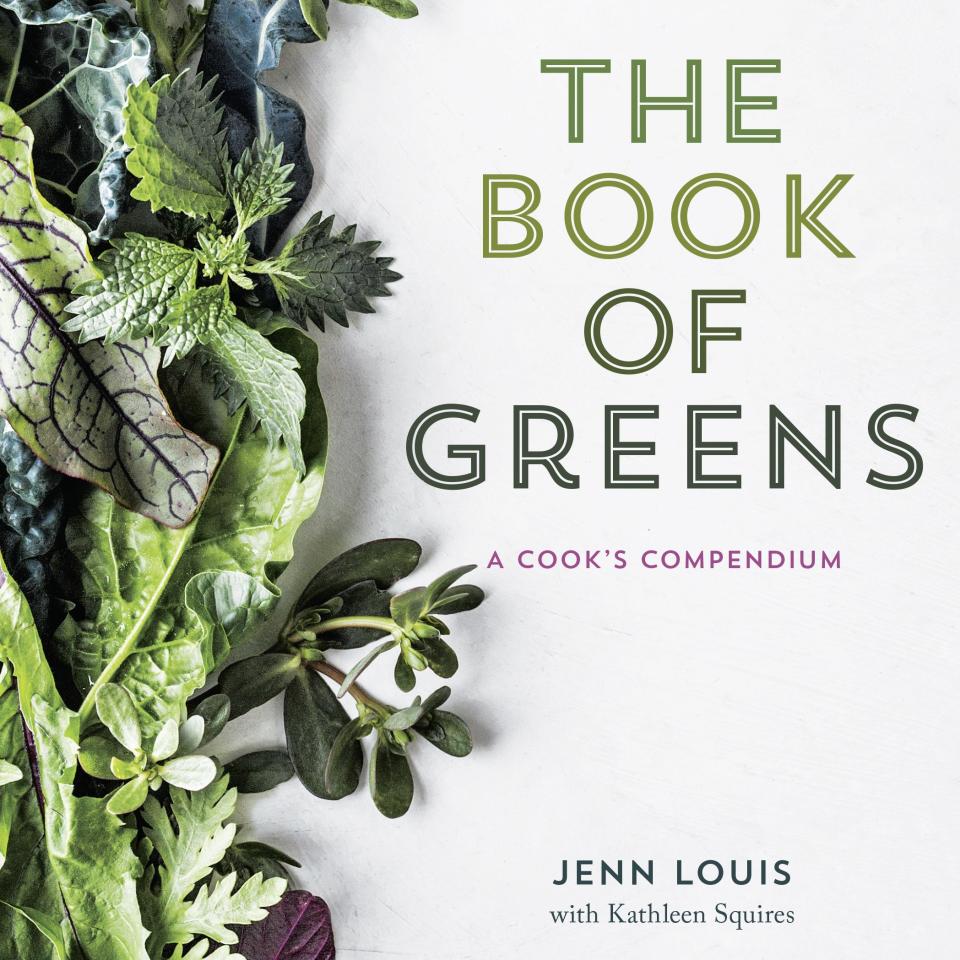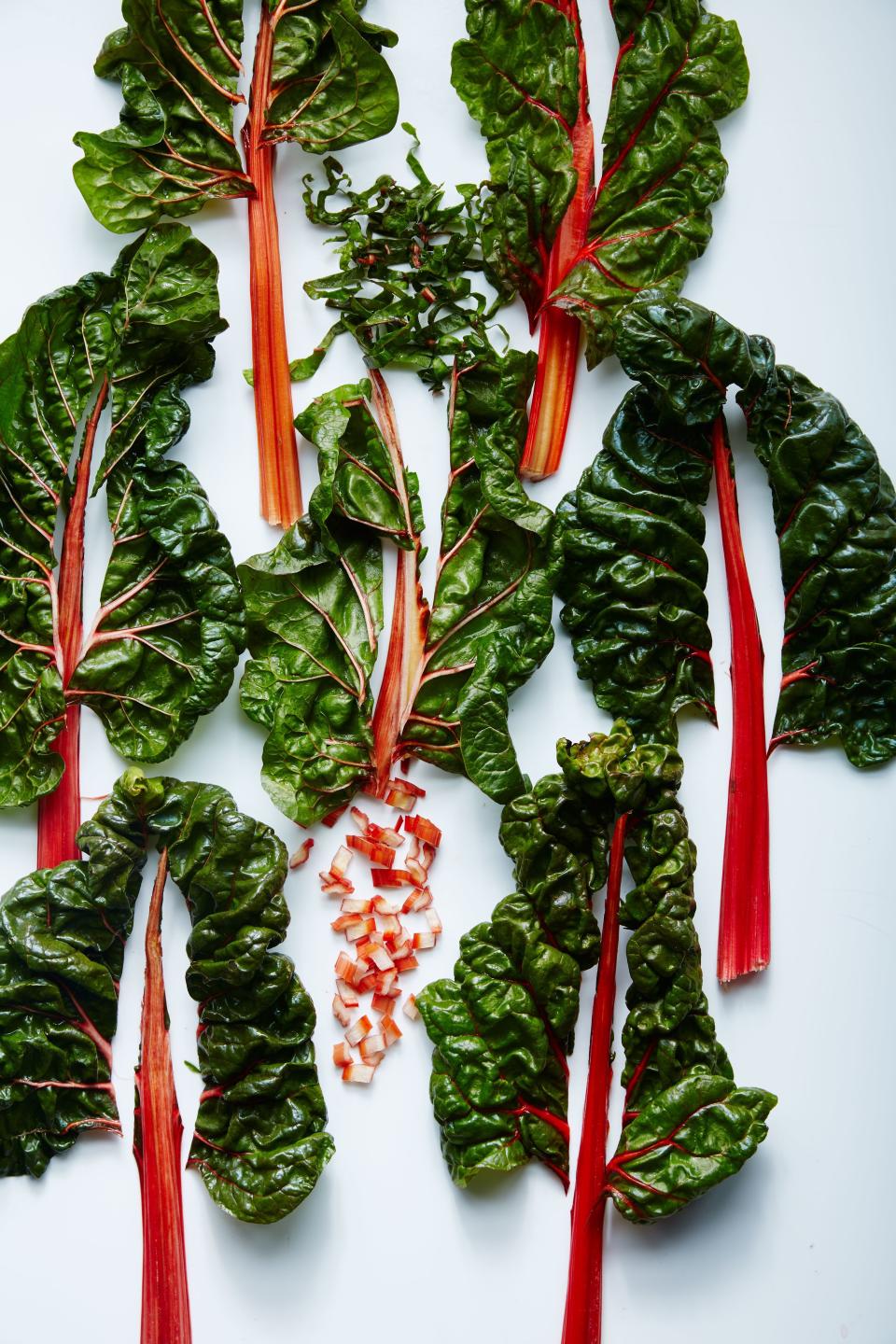Your Cheat Sheet For Buying and Eating Every Common Green
By Jenn Louis and Kate Dwyer. Photos by: Peden + Munk and Ed Anderson.
This guide is adapted from The Book of Greens: A Cook's Compendium, by Jenn Louis, a James Beard-nominated chef based in Portland, Oregon. It includes all the greens you're likely to find at your local farmers' market and a few less common varieties, plus tasting notes from the Bon Appétit test kitchen.
Americans live in the land of farmers’ markets—really good ones at that. It’s exciting to see how many varieties of vegetables, including greens, are now available, but sometimes, the sheer number of choices is overwhelming. How do you decide between sorrel and mâche when you don't know what the heck they are? Instead of getting adventurous, most of us stick with our old standbys—lettuce, spinach, cabbage, and kale—because if you decide to buy a new green, you need to learn how to cook it. Too many friends and customers have asked me, “I bought X, what do I do with it?” Or, “I bought something new, cooked it, and it didn’t work out…” As a lover of greens, I wanted to share what I know.
Here’s the deal: greens should be a key part of every meal. They’re packed with nutrients, inexpensive to grow, and span a broad range of flavors and textures. Of course, they are superdelicious, too. Use this guide as your inspiration to make a fresh start in your home kitchen with greens. As my old sous chef used to say: “Green means go, baby! Green means go!”
Arugula
This salad green may be common today, but, in ancient Rome, where it was first cultivated, arugula was known as an aphrodisiac. Its strong, pungent, peppery flavor—in sharp contrast to its delicate texture—makes it clear why arugula was once deemed so powerful. Whether they call it rocket, rucola, roquette, ruchetta, or Italian cress, this “ordinary” salad green is incredibly versatile. It's added to pastas in Italy, tossed with boiled potatoes or into soups in eastern Europe, and mixed into omelets in the eastern Mediterranean.
Key nutrients: Vitamins A, B, C, and K; potassium, zinc, copper, iron, calcium, phosphorus, manganese, protein, and dietary fiber.
Tasting notes: Not only does Italian rustica arugula look sharper with its spiked edges, its flavor is more intensely peppery, says BA senior food editor Andy Baraghani. On the other hand, French arugula (identifiable by its rounded edges) is softer in the mouth with less of a lingering aftertaste.
Season: Late spring to early fall
Use it to make: Arugula Gimlet, Grilled Spiced Chicken Wraps, Grilled Broccoli and Arugula Salad,
More Arugula: How to Buy, Store, and Cook Arugula in Season in June
Bok Choy
Choy translates to “vegetable” in Chinese. The global embrace of Chinese cuisine has popularized its star—bok choy—while other varieties have been trickling into Asian groceries across the United States. Asians, like Europeans, have a tradition of purchasing food on a daily basis to consume it, so choys in Asian markets tend to have great turnaround, meaning they are particularly fresh and meant to be eaten right away.
Key nutrients: Vitamins A and C, potassium, and beta-carotene
Tasting notes: Clean, crunchy, vegetal
Season: Spring to fall
Use it to make: Kare-Kare with Beans, Baby Bok Choy, and Eggplant, Ginger-Marinated Hanger Steak, Halibut Foil Packs with Chile Butter
Broccoli Rabe
Some people have issues with broccoli rabe, aka raab, rabe, or rapini, because of its intense bitterness. But, here’s a tip: The fresher it is, the less bitter it will taste, so search it out in farmers’ markets instead of grocery stores. Blanching before cooking will reduce its pungency as well. Broccoli rabe is also called Italian turnip, which is actually a more accurate name, as it is botanically much closer to turnips than it is to broccoli—like first cousins versus third cousins thrice removed—though they all belong to the big Brassicaceae family.
This staple in southern Italian cuisine appeared in cookbooks as early as the fourteenth century, and it’s wildly popular in Portugal, Spain, and China. Broccoli rabe is high in fiber, known to aid digestion, and fights inflammation due to its high folate content.
Key nutrients: Vitamins A, C, and K and of potassium and manganese.
Tasting notes:"Bitter to the point at which the aftertaste has a long finish," says Baraghani.
Season: Fall through spring
Use it to make: Lobster Noodle Soup, Steak-and-Egg Bibimbap, Pasta with Anchovy Butter and Broccoli Rabe
More Broccoli Rabe: We’re Not Bitter About These 11 Broccoli Rabe Recipes
Brussels Sprouts
Often described as “mini cabbages,” Brussels sprouts pack a lot of flavor in their tiny heads. They have the unfortunate reputation of emitting a foul odor during preparation—partly undeserved because the sprouts tend to reek only when cooked too long. Cooking at a high heat along with fat, salt, and acid will cut the bitterness, Baraghani says.
Key nutrients: Vitamins B, C, and K; beta-carotene, iron, magnesium, and dietary fiber.
Tasting notes: Sharp with notes of mustard
Season: Late summer through winter
Use it to make: Brassicas Bowl, Root Vegetable Zoodle Soup with Basil Oil, Winter Salad with Brussels Sprouts and Citrus
More Brussels Sprouts: 25 Brussels Sprouts Recipes for Roasts, Salads, Kimchi, Salads, and More
Cabbage
Like Brussels Sprouts, cabbage contains sulforaphane, which studies have shown are effective at lowering cancer risk. The Johns Hopkins School of Public Health found it can also rid the body of pollutants. Contemporary scholars are not the first to recognize the vegetable’s medicinal properties, however; in ancient Greece, cabbage was used as a laxative and as a liniment for healing bruises and sties, while the Romans swore by its hangover-curing properties.
Key nutrients: Vitamins B, C, and K; calcium, iron, magnesium, phosphorus, potassium, dietary fiber, and manganese.
Tasting notes: Bitter with a hint of sweetness
Season: Late fall through winter
Use it to make: Cabbage and Asian Pear Slaw, Caraway Cabbage Chips and Dill Yogurt, Spicy Cabbage Salad with Turkey and Peanuts
More Cabbage: 10 Recipes to Make Anyone Love Cabbage
Chard
Sturdier than spinach and more delicate than kale, chard boasts two great components: its dark leaves are both tasty and nutrient-rich, and its ribs and stalks are uniquely flavored and pleasantly crunchy. Chard is perhaps the most Instagram-ready green on this list, too, with hints of red, pink, gold, purple, orange, yellow, or white. Though people call it “Swiss chard,” this vegetable is native to the Mediterranean and features unique flavonoid phytonutrients that can aid in blood sugar regulation.
Key nutrients: Vitamins A, B, C, E, and K; magnesium, manganese, iron, and potassium; dietary fiber, calcium, phosphorus, protein, pantothenic acid, zinc, and selenium.
Tasting notes: Mellow sweetness
Seasons: Spring through summer
Use it to make: Smoked Fish and Rice Breakfast Bowl, Green Shakshuka, Green Curry with Brown Rice Noodles and Swiss Chard
More Chard: 19 Creative Ways to Cook with Swiss Chard
Chicories
Chicory has been around as long as civilization itself. It's apparently one of the “bitter herbs” cited in the Bible to be eaten for Passover, and the ancient Greeks and Romans consumed it copiously. Chicory even has a history with the Founding Fathers: Thomas Jefferson was one of the country’s first chicory farmers, cultivating seeds given to him by George Washington.
Key nutrients: Vitamins A, B, C, and K; calcium, copper, iron, potassium, manganese, zinc, and dietary fiber.
Tasting notes: Varies by species, can range from the slightly bitter frisée to the very bitter puntarelle.
Seasons: Fall through winter
Use them to make: Chicory-Apple Salad with Brown Butter Dressing, Chicory Salad with Smoked Salmon, Fava Bean Salad with Chicory and Red Onion
More Chicory: 22 Chicory Recipes to Get On Immediately, Because Bitter is Better, How to Buy, Store and Cook Chicory, in Season in September
Collard Greens
A relative of cabbage and broccoli, leafy collard greens have been grown and eaten for millennia. Today, the large, deep green leaves are cultivated in South America, Africa, Europe, northern India, Southeast Asia, and in the American South, where they have a long history. A fresh collard leaf hung over a door ostensibly prevents evil spirits from entering, and a leaf on the forehead is thought to have the power to relieve headaches. They’re also used as a digestive aid.
Key nutrients: Vitamins A, C, and K; calcium, iron, manganese, and fiber.
Season: Winter through Spring
Tasting notes: Earthy, slightly bitter, and mineral
Use them to make: Coconut-Roasted Sweet Potatoes and Collard Greens, Alt-Grain Porridge with Garlicky Greens, Collard Greens and Kale Pesto
Pair collard greens with coconut milk and you’ll never look back.
Dandelion Greens
Often looked upon as a scourge to the suburban lawn, dandelions—especially their greens—are healthy and delectable in the kitchen. They've been used medicinally since the tenth century in the Middle East, and today are still considered to have properties that support a healthy liver, digestive system, and blood.
Key nutrients: Vitamins A, B, C, E, and K; potassium, protein, omega-3 and omega-6 fatty acids; calcium, iron, manganese, magnesium, phosphorus, and copper.
Tasting notes: Intense and bitter flavor, which mellows when cooked
Season: Early to mid-spring (when dandelions bloom!)
Use them to make: Yellow Pepper and Corn Salad with Turmeric Dressing, Dandelion, Date and Blue Cheese Salad with Brown Butter Dressing, Bitter Greens with Sautéed Corn and Shallots
More Dandelion Greens: How to Buy, Store, and Cook Dandelion Greens In Season in March
Kale
A descendant of cabbage, kale’s history stretches back to the Stone Age, when it was an important form of nutrition and valued for its ability to withstand cold temperatures. Cato and Pliny the Elder wrote about its health benefits, and the ancient Greeks used it to snap Bacchanalian revelers out of drunkenness. In more modern times, the Scots grew so much of it that they even created their own variety (we have them to thank for that beautiful curly kale). In fact, kale was the most important vegetable in the country until the potato came around. It then spread to become a staple in the rest of Europe, especially in Italy, France, and the colder climes of Germany, Denmark, and the Netherlands.
Key nutrients: Vitamins A, B, C, E, and K and with calcium, potassium, manganese, iron, phosphorus, and fiber.
Tasting notes: "Pleasantly grassy," says Baraghani.
Season: Fall through winter
Use it to make: Smoked Fish and Rice Breakfast Bowl, Overnight Oats with Soft-Cooked Egg and Miso-Braised Kale, Cold Sesame Noodles with Broccoli and Kale
More Kale: 32 Kale Recipes and Yes, You’ll Want to Make Them All
Lettuce
Lettuce is one of the most ancient of greens: A lettuce hieroglyph was found in an Egyptian tomb dating back to 4500 BCE. The ancient Greeks and Romans cultivated it, and today there are countless varieties available. Though it is the most recognizable category of greens, it's all too often used the least creatively. Sure, we have lettuce to thank for the existence of the salad, but why stop there?
Key nutrients: Vitamins B, C, and K; calcium, magnesium, phosphorus, copper; iron, potassium, and manganese
Tasting notes: Fresh, crisp, clean—probably the sweetest green on this list
Season: Year-round, depending on the species
Use it to make: Grilled Little Gem Salad with Pita Croutons, Salmon on Greens with Wasabi Peas, Shaved Cauliflower Salad
More Lettuce: 38 Lettuce Recipes That Go Beyond Salad
Mâche
Mâche is like the popcorn of lettuces, because its tiny rosettes pop in your mouth. Also called corn lettuce and lamb’s lettuce, the gentle green became popular in the United States via farmer Todd Koons, the lettuce-in-a-bag entrepreneur who first included mâche in his salad mix.
Key nutrients: Vitamins A, B, and C; potassium, copper, and iron
Tasting notes: Sweet and nutty. Baraghani says it’s a “fussy, fussy green that the French love, but you don’t see enough in the U.S.”
Season: Spring through summer
Use it to make: Salmon Niçoise, Mâche Salad with Crispy Shallots, Mâche Salad with Oranges, Pistachios, and Pomegranate
Mustard Greens
Quite simply, mustard greens taste like mustard; some even like to say they are the wasabi of salad greens, as they have that distinct sinus-clearing quality. That said, they’re one of the more versatile greens, because they can be eaten raw, dried, and cooked. Originally from the Himalayas, they are now widespread across Asia, Africa, and the United States, especially in the South, where they are as big a staple as collards. (And yes, the seeds are used to make that famous yellow condiment.)
Key nutrients: Vitamins A, B, C, E, and K; calcium, copper, manganese, phosphorus, and dietary fiber.
Tasting notes: Wasabi-like sharpness
Season: Winter through spring
Use them to make: Fried Egg Flatbreads with Nduja and Mustard Greens, Marinated Beets with Potatoes and Horseradish, Vinegar Marinated Chicken with Buttered Greens and Radishes
Nettles
Nettles are the first wild green to surface from the winter chill each spring. Often foraged, they're a fixture in wooded areas, though they're more and more becoming a farmers market staple. Nettles are native to Europe, Asia, and the North American West, and have been used medicinally and in dyes. In literature, Shakespeare employed them as a metaphor in "Henry IV, Part I" (“Out of this nettle, danger, we pluck this flower, safety…”) This “sticky” comparison comes from the plant’s nature to sting when raw. Therefore, always use gloves when handling raw nettles and always eat them cooked.
Key nutrients: Vitamins A and C; iron, potassium, manganese, and calcium.
Tasting notes: Nutty, earthy
Season: Late winter through early spring
Use them to make: Nettle Chips, or sub them for the chard in Bucatini with Swiss Chard and Garlicky Breadcrumbs
Purslane
Purslane has a distinctive, succulent quality that makes it fun to pair with vegetables with a contrasting texture, like cucumbers. Its aliases "pigweed" and "little hogweed" convey that people in the United States treat it like a nuisance, though Europeans, South Americans, Middle Easterners, and Asians have been eating it for millennia. The same cultures that regard it as food have used it medicinally, too. In traditional Chinese medicine, for example, purslane is used for skin ailments.
Key nutrients: Vitamins A, B, C, and E, as well as magnesium, calcium, potassium, and iron.
Tasting notes: Sweet and sour
Seasons: Late spring through summer
Use it to make: Quick Avocado and Tangerine Salad with a Spicy Kick, Purslane Salad
Sorrel
Sorrel is a fruity green used in soups and stews across the globe. In India, it is an essential ingredient in chukka kura pappu, a soup made with yellow lentils. In Romania, it is used to make a sour soup. In Nigeria, it is a common ingredient in stews. And in medieval times in Europe, sorrel was made into a soup to be eaten on religious fasting days. It’s also said to have eyesight-boosting abilities.
Key nutrients: Vitamins A, B, and C and in dietary fiber, iron, magnesium, potassium, and calcium.
Tasting notes: Tart and tangy, like kiwi or green apple
Season: Early spring
Use them to make: Sorrel Rice Bowls with Poached Eggs, Lamb Chops with Greens and Sorrel Salsa Verde, Seared Hake with Potatoes and Green Sauce
More Sorrel: How to Cook and Not Cook with Sorrel, Spring’s Most Astringent Green
Spinach
Fresh from the farmers market or grocery, spinach is one of the most popular greens in existence. Native to Asia, likely Iran, it has flourished around the world for millennia. And Popeye wasn’t its only proponent in history: Catherine de’ Medici spread the popularity of the green to France from her native Italy, making sure that any dish made with it was designated as “Florentine.”
Key nutrients: Vitamins A, B, C, and K; iron, calcium, and potassium.
Tasting notes: Mild and metallic
Season: Spring and fall
Use it to make: Spanakopita Pie, Spinach Roasted Radish, and Herb Frittata, Spinach Ohitashi
More Spinach: 40 Spinach Recipes to Make You Stronger Than Popeye
Tatsoi
This Asian salad green exemplifies the best qualities of various other greens. Its leaves are attached to juicy stalks that in texture are similar to bok choy, yet slightly more delicate. Tatsoi is widely available—it’s a fixture at Asian groceries and farmers’ markets.
Key nutrients: Vitamins A, C, and K; beta-carotene, potassium, calcium, phosphorus, and iron.
Tasting notes: Mustardy, but not as sharp as mustard greens
Season: Spring and late summer-through early fall
Use it to make: Grilled Halibut with Tatsoi and Spicy Thai Chiles, Miso Soup,
Watercress
One of the oldest-documented greens, watercress dates back to ancient Greece, Rome, and Persia, where it was typically fed to soldiers to build their strength. Hippocrates reportedly prescribed it to treat blood disease around 400 BCE, and Captain Cook and his crew consumed it to combat scurvy during long voyages. Now, it’s more likely you’ll find it at afternoon tea in England.
Key nutrients: Vitamins A, B, C, E, and K; calcium, phosphorus, potassium, and manganese.
Tasting notes: Ultra-peppery
Season: Spring and fall
Use it to make: Cold Soba Noodles with Jammy Eggs and Peas, Lime Pickle-Roasted Chicken with Potatoes and Watercress, Watercress Salad with Mustard Vinaigrette
The Book of Greens: A Cook’s Compendium is available now.
This story originally appeared on Bon Appetit.
More from Bon Appetit:
40 Avocado Recipes, So You Can Eat as Much Avocado as Possible
No-Cook Pasta Sauces You Should Have Up Your Sleeve at All Times
24 Recipes Everyone Should Know How to Cook
Our 50 Favorite Weeknight Dinners
